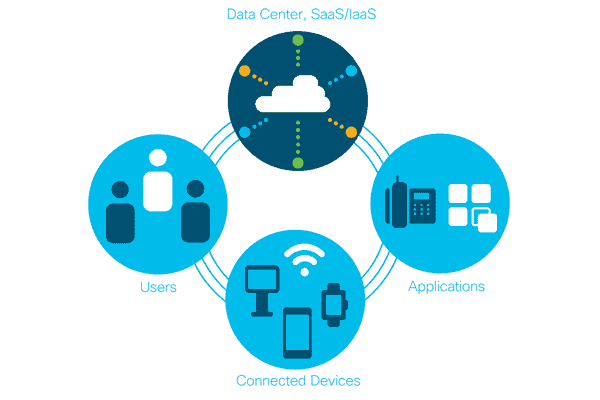“Software-defined Wide Area Network” (SD-WAN) is a digital WAN structure that lets companies securely link users to applications utilizing transmission technologies.
A network of SD-WAN devices connected through encrypted tunnels can monitor the availability and performance of each service inside the network in real-time. When data enters an SD-WAN device, it is classified into distinct categories based on the applications it supports and assigned a priority ranking based on centralized criteria. This enables data to be sent via the most effective network connection.
According to market research, multi-protocol label switching (MPLS) will continue to lose popularity over time owing to the overwhelming SD WAN benefits over conventional networking solutions.
Reducing WAN Costs and Increasing Business Agility
Businesses have traditionally relied on expensive MPLS lines to link their branch offices to their main data center. As more bandwidth is required to meet increased connection needs, the cost of MPLS lines skyrockets, and as a consequence, businesses are unable to fully meet their business objectives. Providing new MPLS circuits may take up to four months, greatly slowing the ability to open a new branch. This makes corporate modifications, agility, and flexibility more challenging.
Enhancing Security
In contrast to traditional WAN systems, which handle security through several vendor devices at each branch site, SD-WAN consolidates all of its features into a single device. SD-WAN may also offer cloud internet content filtering services, such as botnet and other similar services, for each remote site, resulting in a higher level of security.
Ensuring Proper Traffic Prioritization
SD-WAN enables enhanced prioritization of traffic transmitted between applications as well as traffic delivered between apps. Because this is software-defined, it is possible to have software rules that evaluate the bits of communication that move through and determine what is relevant and what is not.
A simple WhatsApp message, on the other hand, might be delivered via the Internet since the software could route business-critical data through the MPLS connection. Because it is less important that a WhatsApp message reach its destination within a millisecond, sending it through the public internet is advantageous because it is less expensive while still being effective for the firm. Even though this does not necessarily suggest that SD-WAN performance is greater, it does imply that you can ensure the performance of the key items.
Enabling a Cloud Architecture
Businesses are progressively shifting their systems to the cloud and adopting software as a service (SaaS) cloud-hosted business programs rather than hosting them in data centers. However, traditional router-based WAN architectures continue to backhaul cloud-destined traffic from branch sites to the data center, mostly for security reasons. When deployed at branch sites, this has a severe detrimental impact on the performance of cloud services.
Enterprises can profit from the flexibility that cloud architecture offers while also enhancing the performance of cloud applications thanks to SD-WAN.
Reducing Costs
MPLS bandwidth is sometimes hundreds of dollars more expensive per megabit per month than other forms of capacity, such as standard broadband, fiber, or cellular. SD-WAN may reduce bandwidth expenses for branches that already have MPLS circuits deployed by rerouting traffic to the cloud or internet over less expensive routes. As a result, MPLS can only be used to transmit business traffic.
Certain branch networking use cases, such as Internet of things (IoT) installations that rely entirely on cloud-based software and data processing, may lead to firms foregoing a new MPLS installation in favor of depending only on SD-WAN and cloud-based security solutions. This not only saves money on installation and bandwidth but also significantly reduces the amount of time necessary to set up a new branch, allowing that branch to begin earning cash much sooner.
Offering Faster Deployment
If you utilize zero-touch provisioning, you may deploy single sites or even a large number of them in a very quick and efficient way. Even better, since the bulk of the tasks are handled automatically, you don’t require a huge number of engineers to work on it.
The adoption of centralized policy management is also advantageous in this situation. You may manage all of the site-specific characteristics from a single spot by using the user-friendly administration platform. Furthermore, SD-WAN solutions provide an in-built monitoring system, which not only improves network visibility but also simplifies setup and troubleshooting.
Conclusion
Technology will play an increasingly essential role in the future workplace, and from the perspective of a corporate leader, software-defined wide area networking (SD-WAN) is the best option for improving network connectivity. The cost is low because the benefits of introducing new technology practice in your firm are obvious via improved performance, flexibility, security, and cost control.



